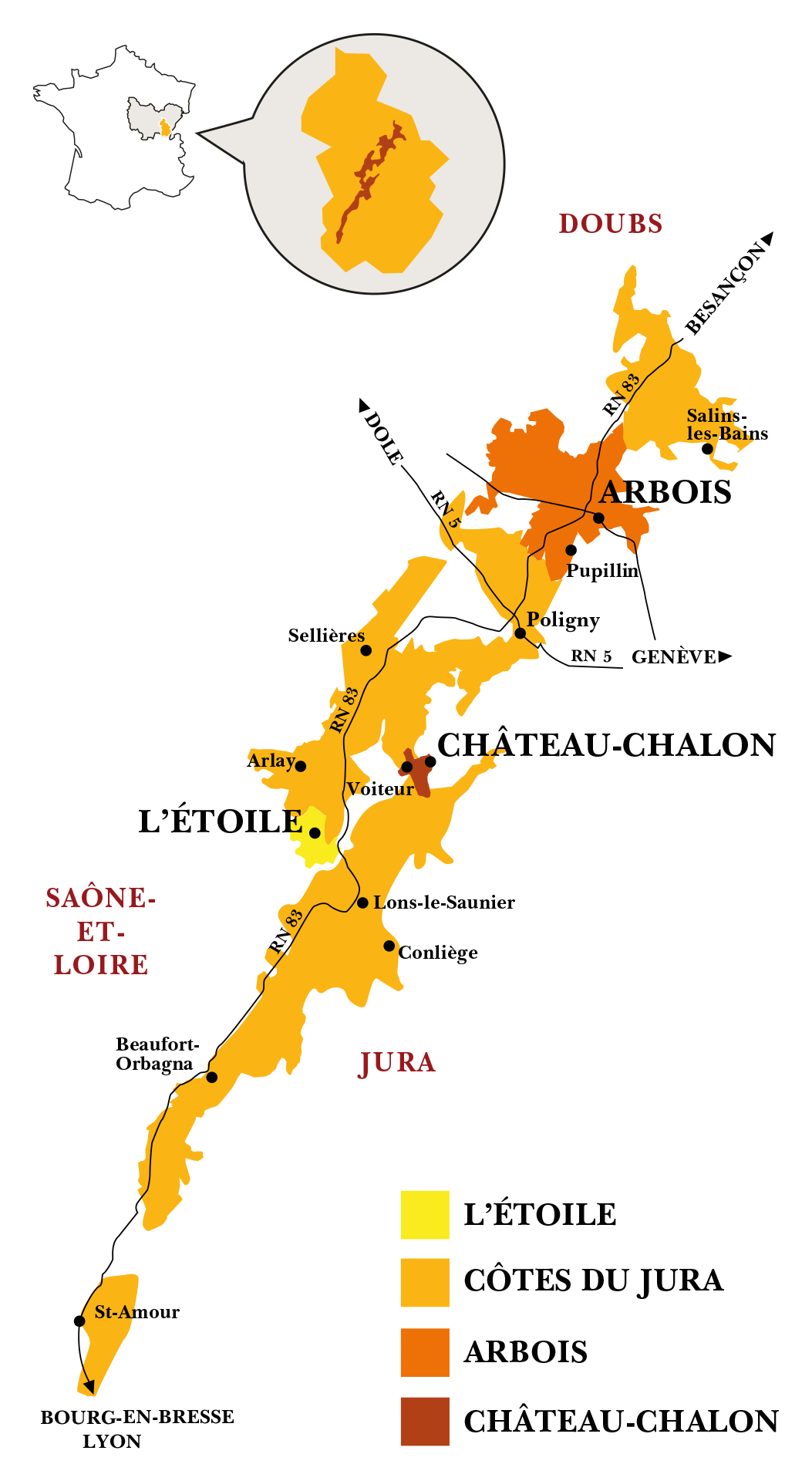CÔTES DU JURA 2022
Rouge
Grape Varieties
This cuvée is a typical blend of the local grapes varieties : Pinot Noir (20%), Trousseau (40%) and Poulsard (40%).
The Pinot Noir grape is often blended with other varieties in the Jura vineyard, for its flavour and cellaring potential. Planted since the 15th century on gravelly soil, it is often the first vine variety to ripen in the Jura.
The Trousseau is an old local, late-fruiting and demanding vine variety from the Franche-Comté area. Trousseau requires light, gravelly, warm soil. It brings the peppery and spicy flavours to the wine.
The Poulsard is another old native grape variety, also known as “Ploussard”. This variety appreciates strong soils, with marl and clay. Its grapes, with white juices and a thin skin produce gourmet and lively juices, with hints of small red fruits and a stunning clear ruby red color.
Tasting notes
This wine offers a perfect balance between the elegance and the finesse of the Pinot Noir, and the spicy, crispy notes with a wilderness of the local grapes. In the glass the wine offers an intense dark cherry-red colour. The nose gives off small red berries aromas, with pleasant spicy hints. In the mouth, the wine is lively, with hints of spice and ripe fruit. It has an elegant structure and a long, elegant finish.
Food and wine paring
Discover with grilled or roasted meats, a salad with poultry liver, quails with raisins, or in accompaniment of a beautiful plate of French cheeses.
Serving suggestions
Serve at a temperature of average 14 to 15°C (57-59°F).
Ageing potential
5 to 8 years.
Appellation
The Jura wine region is small in size but large in its remarkable diversity. It covers 80 kilometers between Burgundy and Switzerland, in the eastern France.
Created in 1937, the AOC of Cotes du Jura is omnipresent in the north and south of the vineyard, on varied and contrasting terroirs. It is the second leading AOC in Jura in terms of production, and it engages all five of the Jura's grape varieties. The whole range of wines of the Jura is represented, although the whites dominate still or sparkling wines.
Winemaking
After the harvest, the grapes are receipted at the winery and put into thermoregulated stainless steel tank for a total maceration of 12 days. Followed regularly throughout the fermentation, incorporating some pumping and pigeage. At the moment of pressing, the press and drop juices of each cuvee are assembled and withdrawn for malolactic fermentation on fine lees. The wines are then aged in stainless tank for 8 months and blended together (20 % Pinot Noir, 40% Trousseau and 40% Poulsard) before light filtration and bottling.
Vintage : 2022
Having endured the nights at the beginning of April, we were spared from the effects of the frost. A budburst on 13 April and flowering on 23 May promised an early harvest. June saw more than 150 mm of rainfall, allowing the marl soils to build up some healthy reserves to cope with the hot summer weather.
The harvest was running from 16 August to 15 September. The grapes destined for the Crémant du Jura opened the show on 16 August, being the earliest date on record at the estate. This decision paid off as the balance of acidity was in line with what we were looking for. For our other Jura appellations, a generous rainfall on the weekend of 20 August allowed the vines to finish ripening in the best conditions.
The excellent health of the grapes allowed us to prolong the harvest until mid-September, with the opportunity to boost the maturity of the reds to their best polyphenolic potential, particularly for the Pinot Noir grapes, creating powerful, full-bodied wines. The white Chardonnays and Savagnins express floral aromas with a perfectly balanced mineral structure.






